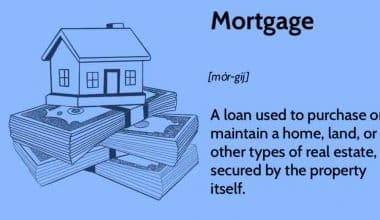Over the past few decades, traditional payday cash advances have transformed entirely in response to consumer demand. With the introduction of artificial intelligence and more sophisticated algorithms, cash advance for bad credit loans made way to a more personalized and user-friendly experience, moving away from otherworldly 400% APRs and into online platforms promising sub 35.99% APRs, longer repayment terms, and no predatory/hidden fees.
Keep reading to learn more about how traditional payday cash advances have made way for more favorable personal loans for bad credit, including a comparative analysis (payday advances versus personal loans) and how the consumer credit market has evolved from one product to the other over time.
What Are Traditional Payday Cash Advances?
Also referred to as payday or paycheck loans, traditional payday cash advances are short-term high APR loans repaid on the borrower’s next payday for a two to four-week pay schedule.
With traditional payday cash advances, expect anywhere from a few hundred to a few thousand dollars, with the actual amount offered based on your income, debt-to-income ratio, employment record, and other factors assessing your ability to repay.
As for a loan example, take the example of a $1,500 loan with a 350% APR repaid over two weeks. The estimated total repayment for this loan (assuming no extra finance charges) is $1,709.86, with more than $200 of it as interest charges — a bad deal if we ever saw one!
Characterized by small loan amounts and high-interest rates/fees (for every $100 borrowed), APRs for payday cash advances typically start at 300% and fly upwards of 400%.
What Are Personal Loans?
Personal loans are money borrowed by consumers for various purposes, including but not limited to home improvement and debt consolidation. They usually go anywhere from a few hundred to several thousand dollars at annual percentage rates (APRs) of up to 35.99%, which factors in the principal, interest, and all finance charges to represent the total cost of borrowing.
APR borrowers qualify depending on lenders’ terms and creditworthiness based on the FICO scale (300 to 850). The higher your credit score, the lower your qualified APRs. They can operate on a fixed or variable basis. Fixed rates remain constant throughout the loan, and varying rates fluctuate based on macroeconomic conditions and Federal Reserve action.
For perspective, a 2-year, 31% APR $3,300 personal loan will result in estimated monthly payments of $186.22 for a total repayment of $4,469.17 (with $1,169.17 in interest paid).
Note: 31% APRs are in the much lower APR range for traditional payday cash advances, with the most common range being 300% APRs, arguably the most expensive loan product today.
In addition, personal loans may be secured or unsecured, requiring the use of collateral such as a vehicle to protect against the risk of default. Naturally, unsecured loans will carry slightly higher average interest rates.
To qualify, lenders may or may not run a credit check. Other factors, such as income, debt-to-income ratio, and employment record, are also considered. Payday cash advances can be taken out via online lenders and loan referral services like 100Lenders and MarketLoans, which connect prospects with a network of hundreds of direct lenders specializing in payday cash advances and personal loans for bad credit.
Keep reading to learn more about personal loans and how they have evolved from payday cash advances to what they are today.
What Are the Differences Between Personal Loans for Bad Credit and Payday Cash Advances?
Here are the main differences between personal loans for bad credit and payday cash advances:
Loan Purpose. Payday cash advances typically award no more than $1,500 for immediate and urgent financial needs such as medical emergencies, auto repairs, utility bills, mortgage payments, funeral expenses, and even unforeseen childcare costs.
Personal loans for bad credit are best for longer-term cash flow challenges, e.g., paying off a $19,500 hospital bill or home renovation project.
Credit Checks. Unlike personal loans for bad credit from banks, credit unions, and online lenders, payday cash advance lenders typically does not run credit checks, assessing eligibility based on your ability to repay through income, debt-to-income ratio, and unemployment stats. Likewise, lenders may not report to Experian, Equifax, or TransUnion, so making payments on time is a little less important.
Interest Rates. Payday cash advances typically straddle triple-digit APRs (local neighborhood stores) versus up to 35.99% for legit online-only options. Personal loans for bad credit usually carry APRs at most 35.99%. For perspective, a $25,000 personal loan for bad credit can have you save hundreds (if not thousands) over a cash advance (assuming the same repayment period and a 100%+ difference in APRs).
Repayment Period. Payday cash advances have a short-term repayment period (two to four weeks). In turn, personal loans for bad credit have a medium to long-term repayment period up to 72 months. One requires a lump sum payment, and the other requires fixed installments, each covering a portion of principal and interest on a monthly repayment cycle.
Depending on the type of loan, many lenders offer flexibility in choosing repayment terms based on individual preferences, including more extended repayment options for lower monthly payments.
Resources. Payday lenders are notorious for not offering resources. Whether it’s financial education with helpful blog topics or hardship programs that allow you to defer or waive interest (short term), expect these with personal loans for bad credit, where financial institutions have a high incentive to educate, keeping consumers into the fold.
A Word on Loan Apps and Buy Now, Pay Later Services
Apart from personal loans, two long types that have eclipsed traditional payday cash advances are cash advance apps (e.g. Earnin, Brigit) and Buy Now, Pay Later services like Affirm, Afterpay, and Klarna.
These two alternative financing options are much more advantageous than payday loans, thanks to lower costs, transparent fee structures, and flexible repayment terms that allow you to spread payments over a fixed period. Plus, it offers convenience through user-friendly mobile apps, allowing you to link apps that check accounts for quick funds disbursement.
Not to mention, each of these serves an important purpose. Loan apps like Earnin and Brigit are best reserved for covering paycheck gaps, covering all or a portion of your next paycheck in exchange for 0% interest and no fees. In turn, BNPL services like Affirm and Afterpay allow you to participate in “Pay in 4” programs that allow you to pay a large lump sum and equal fixed installments over a six week term, allowing you to enjoy a manageable payment plan for expensive items like furniture and jewelry.
In short, recognize the need to use loan apps versus Buy Now, Pay Later services to avoid the high-interest charges and shorter repayment terms offered by traditional payday cash advances and some bad credit personal loans.
How the Evolution Change the Payday Cash Advances to Personal Online Loans
In the early 20th century, an emerging consumer credit market emerged, with credit providers promoting their loan products and services. One of the most popular products was a one-week loan with 120 to 500% interest rates, one of the first ever payday cash advances to be issued.
In response to skyrocketing interest rates, every state has begun showing its mandates, imposing maximum restrictions on loan amounts, interest rates, and finance charges. One flagship law, the Uniform Small Loan Law (1916), set a maximum 3.5% interest rate cap on loans valued at $300 or less, which many installment lenders piggybacked upon with new offerings.
By the mid-20th century, the market was flooded with short-term and installment loan options, with ongoing federal banking laws in the ’70s and ’80s deregulating federal banking, making it easier for payday lenders to bypass Arizona laws and erecting mass neighborhood loan stores in low-income neighborhoods.
At the same time, payday loans slowly became personal loans for bad credit. For many, the promise of higher loan amounts and longer repayment terms of up to 72 months made it easier to borrow more and manage repayment.
Today, statute law persists, regulating payday lending in many ways. For example, a 35.99% maximum interest rate cap is imposed on all payday loans, with some exceptions. In addition, the Consumer Financial Protection Bureau (CFPB) began, with the goal of protecting consumers from predatory payday loans by offering increased regulation/oversight and establishing new pay requirements limiting rollovers and even mandating notification requirements where all lenders must be fully transparent with terms, costs, and risks.
Conclusion
In short, the road from traditional payday cash advances to more favorable personal loans has been lengthy. Recognizing the need for improved interest rates and terms, this loan type has naturally evolved. Remember, we advise against payday loans, as personal loans offer much lower interest rates and more significant amounts for virtually any expense you must cover.






